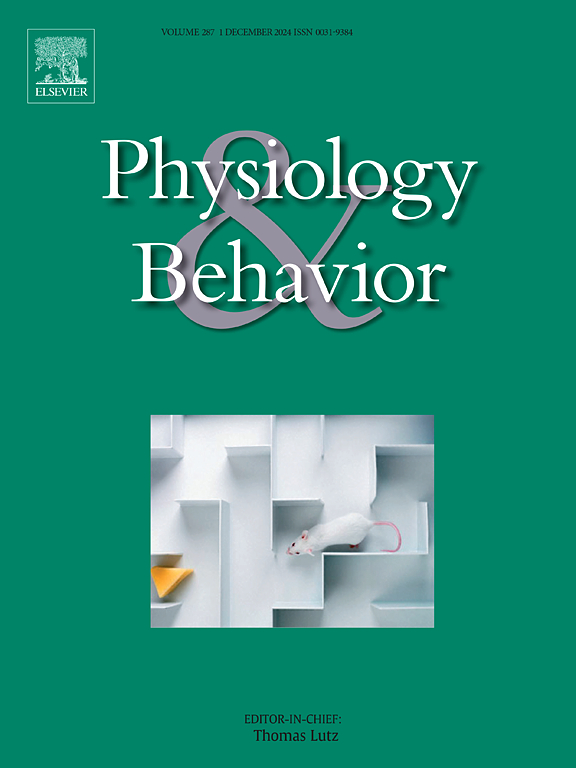大脑和身体之间的竞争:与单独执行这些任务相比,同时执行认知和身体任务是否会改变运动员的皮层活动?
IF 2.5
3区 医学
Q2 BEHAVIORAL SCIENCES
引用次数: 0
摘要
运动员的认知和身体表现之间的急性权衡的潜在机制尚不清楚。本研究对13名训练有素的受试者进行了同时进行认知和体力任务对脑皮层电活动的影响,这些受试者分别完成了“孤立”的认知任务(Stroop任务)、“孤立”的体力任务(12分钟循环劳力计任务)和同时进行的(Stroop任务+循环劳力计)任务。受试者完成主观工作量量表(NASA-TLX)和感知努力量表评分。对于皮质活动分析(EEG),保留了7名参与者的数据,允许对每种情况进行434个观察单位的分析。计算δ(0.5 ~≤4 Hz)、θ θ (>4 ~≤8 Hz)、α α (>8 ~≤13 Hz)、β β (>13 ~≤30 Hz)和γ γ (>30 Hz)频率的谱功率,以及生物标志物theta-beta比(TBR)。在孤立的物理任务和同时条件下(与认知条件相比),观察到伽马、β和α波段的活动显著降低(p <;0.001)。此外,在孤立物理任务和同时条件下,相对慢频率更高,并且在同时条件下具有更高的优势(p <;0.001)。同时状态(相对于孤立的身体状态和孤立的认知状态)的TBR值更高,而物理状态的TBR值高于认知状态(p <;0.001)。这种转变表明,当大脑同时管理认知负荷和体力劳动时,振荡活动会重新分配,这可能反映了一种更节约能量或更整合的皮层状态。本文章由计算机程序翻译,如有差异,请以英文原文为准。
The competition between brain and body: Does performing simultaneous cognitive and physical tasks alter the cortical activity of athletes compared to performing these tasks in isolation?
The underlying mechanism of an acute trade-off between cognitive and physical performances in athletes is still unclear. This study examined the effect of simultaneous cognitive and physical tasks on cortical electrical activity in 13 well-trained individuals who completed the "isolated" cognitive task (Stroop task), "isolated" physical task (12-minute cycle ergometer task), and the simultaneous (Stroop task + cycle ergometer) conditions. The participants fulfilled the subjective workload scale (NASA-TLX) and the ratings of perceived effort scale. For the cortical activity analysis (EEG), data from seven participants were retained allowing the analysis of 434 observational units for each condition. Spectral power was calculated for delta δ (0.5 to ≤4 Hz), theta θ (>4 to ≤8 Hz), alpha α (>8 to ≤13 Hz), beta β (>13 to ≤30 Hz) and gamma γ (>30 Hz) frequencies, and the biomarker theta-beta ratio (TBR). Significantly lower activity in gamma, beta and alpha bands during the isolated physical task and simultaneous condition (vs. cognitive condition) was observed (p < 0.001). Moreover, the relative slow frequencies were higher during the isolated physical task and simultaneous conditions, with higher predominance during the simultaneous condition (p < 0.001). The TBR presented a higher value for simultaneous (vs. isolated physical and isolated cognitive), with a higher value for the physical compared to cognitive condition (p < 0.001). This shift suggests that when the brain is concurrently managing cognitive load and physical effort, there is a redistribution of oscillatory activity, possibly reflecting a more energy-conserving or integrative cortical state.
求助全文
通过发布文献求助,成功后即可免费获取论文全文。
去求助
来源期刊

Physiology & Behavior
医学-行为科学
CiteScore
5.70
自引率
3.40%
发文量
274
审稿时长
47 days
期刊介绍:
Physiology & Behavior is aimed at the causal physiological mechanisms of behavior and its modulation by environmental factors. The journal invites original reports in the broad area of behavioral and cognitive neuroscience, in which at least one variable is physiological and the primary emphasis and theoretical context are behavioral. The range of subjects includes behavioral neuroendocrinology, psychoneuroimmunology, learning and memory, ingestion, social behavior, and studies related to the mechanisms of psychopathology. Contemporary reviews and theoretical articles are welcomed and the Editors invite such proposals from interested authors.
 求助内容:
求助内容: 应助结果提醒方式:
应助结果提醒方式:


